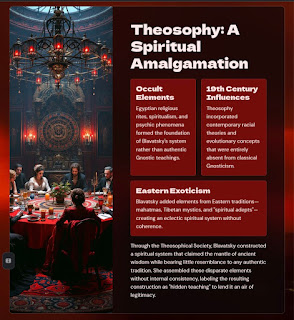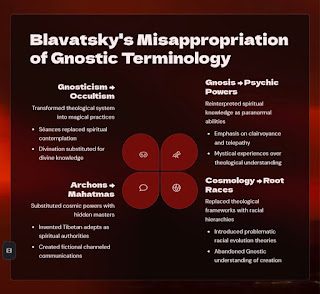On the Nature of Spirit and Matter: A Dialogue between Metrodoros and Philonikos
**Metrodoros**: Tell me, Philonikos, what do you believe this fire from the sky is, which men call lightning?
**Philonikos**: I have often pondered it. Some say it is the will of the gods, others call it a sign from the heavens. But what do you say, Metrodoros?
**Metrodoros**: I say it is neither divine will nor omen, but a natural effluence—an emission of energy, much like the spark generated when amber, *ēlektron* (ἤλεκτρον), is rubbed with cloth. Did not our forefathers notice this force, and from it derive the very term from which “electricity” comes?
**Philonikos**: Indeed. I recall the writings on the static properties of amber. But how does this relate to what some call “spirit”?
**Metrodoros**: Let us not be deceived by mysticism. What is called “spirit” by the many is nothing more than a form of corporeal energy. Just as amber reveals hidden fire through friction, so too does every living body emit something—call it warmth, breath, or motion. This emission is what men once called *pneuma* (πνεῦμα), and falsely separated from matter.
**Philonikos**: But are there not accounts of radiant beings, luminous and flashing with fire, said to be divine?
**Metrodoros**: Those are poetic expressions, Philonikos. The ancients described such figures emerging from fire and light not to assert literal divinity, but to point toward the majesty of energy in motion. What they saw—if indeed they saw anything—was a natural manifestation of light and combustion. The word they used, *ēlektron*, described not an alloy, but a glowing brilliance. That brilliance, to the philosophic mind, is a product of natural force.
**Philonikos**: And what of this force? Is it incorporeal, as some argue?
**Metrodoros**: By no means. There is no such thing as the incorporeal. All that exists is either matter or void. If *pneuma* acts, then it must have extension and substance, however fine. Consider fire: it is matter, though it dances lightly in the air. Or consider the magnet, which attracts iron—not by magic, but by force that emanates from its substance. That emanation is spirit, but not immaterial spirit. It is matter refined, energy as matter-in-motion.
**Philonikos**: This reminds me of the glowing iron you spoke of once—heated to white light, yet still iron.
**Metrodoros**: Just so. That iron, though solid, reveals a corona of heat and light. That corona is not distinct from its source; it is its natural extension. This, then, is a model for understanding what others mystify. The power that emanates is not a separate soul or divine force. It is simply energy, emerging from matter, as scent from a flower or steam from boiling water.
**Philonikos**: And you say this is the nature of the gods?
**Metrodoros**: If the gods exist—and Epicurus allows it—they must be material, composed of the finest substance. But the Divine, if we use that word, is not separate from the cosmos. It is the harmony of atomic motion, the calm ordering of the all. If there is *nous* (mind), it resides in the structure of matter, not outside it.
**Philonikos**: Then the division made between matter and spirit is false?
**Metrodoros**: Entirely false. It arises from ignorance. Matter is not base or corrupt, nor is spirit high and pure. Both are the same. All that is, is made of atoms and void. What people call spirit is merely matter in motion. The heated iron, the lightning in the sky, the thought in the mind—all are material. There is no place for non-being in our explanation of the world.
**Philonikos**: But some claim that immaterial things are immortal.
**Metrodoros**: A foolish notion. That which is immaterial is nothing at all, and that which is nothing cannot exist, much less live forever. Only that which has substance can endure—and even then, only so long as its form holds. All things born of matter decay, and yet matter itself remains, for it cannot be destroyed.
**Philonikos**: Then the belief that the incorporeal is eternal leads to contradiction.
**Metrodoros**: Precisely. To say that something is immortal because it is immaterial is to say that it is immortal because it does not exist. That is not philosophy, but madness.
**Philonikos**: What of the mind, then? Is not *nous* a kind of spirit?
**Metrodoros**: *Nous* is matter organized in a particular way. It is the harmonious motion of the finest atoms, most likely within the chest or brain. When the body ceases to function, that motion ends. The person is no more. There is no need to fear death or yearn for immaterial survival.
**Philonikos**: Then the true spirit is the energy of life itself.
**Metrodoros**: Yes, and that energy is rooted in substance. The so-called “divine fire” is not holy—it is natural. It moves in the heavens as lightning and stirs in our bodies as breath and thought. Let us not worship it, but understand it. From that understanding comes peace.
**Philonikos**: Your words bring clarity, friend. I shall abandon my speculations about incorporeal forms.
**Metrodoros**: Then you are free, Philonikos. For the truth is not in fables, but in the atoms, and the void between.
---
---
**The Radiance of Nature: Spirit and Energy as Corporeal Force in Epicurean Thought**
In the language of nature, what ancient poets and sages called *spirit* (πνεῦμα) is more properly understood as a form of corporeal energy, akin to what modern science refers to as electricity. This radiant energy, described in earlier symbolic traditions as emerging from fire and brightness, is not supernatural, but a natural manifestation of matter in motion—corporeal and real, not abstract or immaterial. The term ἤλεκτρον (ēlektron), meaning amber in Greek, is the root of what we now call electricity. The ancients observed that amber, when rubbed, could attract small particles—evidence of static energy. Thus, ἤλεκτρον became a symbol of luminous, active force.
In earlier visionary descriptions, beings of fire and brightness were said to emerge from a luminous core, appearing like *electrum* (ἠλέκτρου)—not as a metal alloy, but as radiant brilliance, a glowing energy representing the dynamic nature of existence. This brightness, misinterpreted as immaterial by some, is in fact a refined expression of the material world: a glowing, energetic field, corporeal and vital. The perception of this force—call it pneuma, electricity, or heat—is rooted in natural philosophy and grounded in the physics of the observable world.
According to an Epicurean understanding, there is no need to invent incorporeal substances to explain motion, energy, or life. Nature operates through atoms and void, and the pneuma or *spiritus* some attribute to divine action is simply the movement and emission of energy from bodies. Consider heated iron: though solid, it radiates light and warmth when energized. The glowing atmosphere surrounding it is not a ghostly essence, but the material consequence of energy transfer—a transformation governed by natural law, not divine fiat.
Thus, what is called "spirit" (πνεῦμα) is nothing more than material in a subtle, active form. Epicurus taught that all things are composed of atoms, including the mind and the vital breath. This animated matter is not separated from the body but is coextensive with it. Spirit is corporeal. It is not a shadowy double or ethereal agent but a refined substance, invisible perhaps to the eye but measurable through its effects. Lightning, fire, magnetism—all are examples of pneuma in action: matter in energetic configuration.
Moreover, the equivalence of energy and matter, demonstrated in modern times by the equation E = mc², affirms the unity of the physical world. There is no divide between matter and energy, spirit and body. The phenomena of light, heat, and vitality are transformations within the same material substratum. If what was once called *spirit* is understood as energy, it follows that all spirit is matter in motion—corporeal, structured, and natural.
This understanding liberates the mind from superstition and fear. The divine, if it exists, is not a disembodied intelligence but an arrangement of matter in perfection. The cosmos is not ruled by an arbitrary will, but by the eternal nature of atoms, moving in the void, forming worlds, lives, and intelligences. Nothing occurs by chance in the sense of purposeless disorder; rather, events unfold by the principles of natural causation.
What some have described as divine will or supernatural emanation is better understood as the natural effect of energy emitted from a body. Like a magnet attracting iron, or heat radiating from the sun, energy proceeds according to the configuration of the body from which it issues. The Father—understood not as a person, but as the archetype of generative nature—is corporeal, composed of matter, and therefore real. There was never a time when this generative principle was not corporeal. The concept of a non-material source is philosophically incoherent; for if something exists, it must have being, and if it has being, it must be matter.
The traditional dualism between "matter" and "spirit" is artificial and unsupported by natural reason. According to Epicureanism, only bodies and void exist. Matter is eternal, though its forms are mutable. While individual configurations perish, the atoms that comprise them remain. Hence, there is no immaterial or immortal essence distinct from the body. Immortality is not the result of being non-material—indeed, the immaterial is simply non-existent.
This has profound implications for ethics and peace of mind. If all things are corporeal, then death is not to be feared, for it is simply the dissolution of the atomic structure. The so-called spirit does not survive as a ghostly residue, but returns to nature. The idea that immateriality ensures immortality is a fallacy born from ignorance. In truth, the only reality is the corporeal. Even fire, electricity, and magnetism—once deemed mystical—are natural phenomena, observable and measurable, parts of the atomic order.
Therefore, to understand *spirit* as energy—a material phenomenon—is to demystify the cosmos and affirm the reality of nature. The pneuma that animates life is not a breath from beyond but a configuration of particles in motion. The *logos* or ordering principle is not imposed from without but arises from the harmony of the natural world. This is a cosmos without supernatural interventions, where the divine, if it is to be found at all, resides in the eternal dance of atoms.
The philosopher who understands this has no fear of death, no terror of spirits, and no longing for mystical ascension. Instead, such a one delights in the natural world, reveres the harmony of bodies, and finds peace in the order of things. The universe is full of radiant energy—not because it is haunted by gods or spirits, but because nature itself is alive with motion, form, and transformation.
---

















































